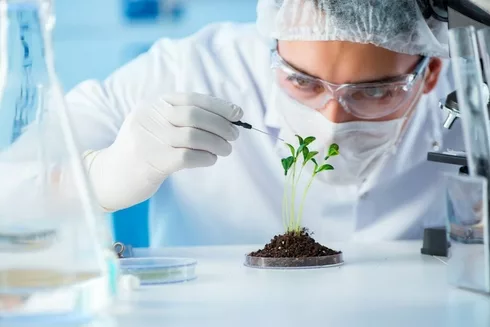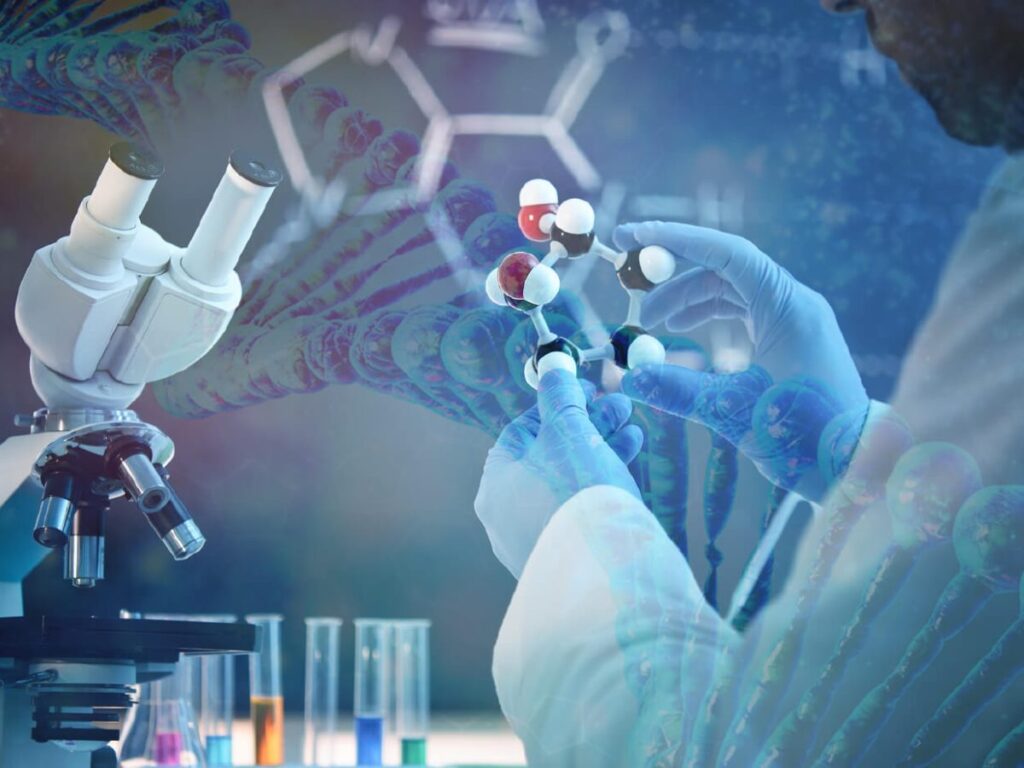Biotechnology encompasses a broad spectrum of interdisciplinary subjects aimed at manipulating biological systems for various purposes. Key areas include molecular biology, focusing on the structure and function of biomolecules like DNA and proteins; genetics, which explores heredity and genetic manipulation techniques; and biochemistry, delving into the chemical processes within organisms.
Additionally, cell biology investigates cellular structure and function, while microbiology studies microorganisms’ physiology and genetics. Immunology examines the immune system’s responses, while bioprocess engineering optimizes production processes for biotechnological products. Biophysics integrates physics principles into biology, and bioinformatics applies computational tools to biological data analysis.
Finally, ethical, legal, and social implications are considered, ensuring responsible use of biotechnological advancements. These subjects collectively underpin the field of biotechnology, driving research, industry, and healthcare applications.
What are the key subjects in biotechnology?

Biotechnology is a multidisciplinary field that encompasses various subjects, each playing a crucial role in its applications and advancements. Some key subjects in biotechnology include:
Molecular Biology
Molecular biology encompasses the study of DNA packaging into chromatin, chromosomal structure, and the regulation of gene expression through chromatin remodeling and histone modifications.
Techniques like chromatin immunoprecipitation (ChIP) and DNase-seq are used to map protein-DNA interactions and identify regulatory elements such as enhancers and promoters.
Molecular biology also explores RNA processing events like splicing, polyadenylation, and RNA editing, which diversify the transcriptome and contribute to cellular diversity.
Genetics
Population genetics investigates genetic variation within and between populations, including mechanisms like genetic drift, founder effects, and population bottlenecks. Evolutionary genetics examines the molecular basis of adaptation, including the role of beneficial mutations and natural selection in shaping allele frequencies over time.
Human genetics encompasses complex traits influenced by multiple genetic and environmental factors, such as genome-wide association studies (GWAS) that identify genetic risk factors for common diseases like diabetes and cardiovascular disorders.
Biochemistry
Biochemical studies elucidate the mechanisms of enzyme catalysis, including the roles of active site residues and transition state stabilization.
Structural biochemistry investigates protein-ligand interactions using techniques like isothermal titration calorimetry (ITC) and surface plasmon resonance (SPR).
Metabolomics enables the comprehensive analysis of metabolic pathways and fluxes in biological systems, revealing metabolic signatures associated with disease states and drug responses.
Cell Biology
Cell biology explores the dynamics of membrane trafficking, including endocytosis, exocytosis, and vesicle fusion events mediated by SNARE proteins.
Developmental biology investigates the molecular mechanisms of pattern formation and tissue morphogenesis, including the role of morphogens and signaling gradients in embryonic development.
Single-cell transcriptomics and spatial transcriptomics provide insights into cell-to-cell variability and spatial organization within tissues, uncovering novel cell types and lineage relationships.
Microbiology
Microbiology encompasses the study of microbial communities in diverse environments, including the human microbiome, soil microbiota, and aquatic ecosystems.
Viral genomics characterizes viral diversity, evolution, and transmission dynamics, informing the development of antiviral therapies and vaccines.
Synthetic microbiology engineers microbial consortia for biotechnological applications, such as consortia for biofuel production or microbial communities for soil remediation.
Bioprocess Engineering
Bioprocess engineering optimizes bioreactor design and operation for specific applications, such as batch, fed-batch, and continuous fermentation modes.
Downstream processing strategies include affinity chromatography, ion exchange chromatography, and membrane filtration techniques for protein purification.
Process integration and optimization utilize mathematical modeling and simulation tools to maximize process efficiency and minimize production costs.
Bioinformatics
Bioinformatics pipelines analyze high-throughput sequencing data, including preprocessing, alignment, variant calling, and downstream analysis of genomic, transcriptomic, and epigenomic datasets.
Structural bioinformatics predicts protein structures, protein-protein interactions, and ligand binding sites using computational methods like homology modeling and molecular docking.
Systems biology modeling integrates multi-omics data to construct predictive models of cellular networks and pathways, enabling simulations of cellular behaviors under different conditions.
Immunology
Immunology explores immune cell communication and crosstalk in the context of immune responses to pathogens, tumors, and self-antigens.
Immunotherapy strategies include adoptive cell therapy, chimeric antigen receptor (CAR) T-cell therapy, and immune checkpoint blockade, which enhance anti-tumor immunity by targeting inhibitory pathways.
Systems immunology employs single-cell technologies and computational modeling to dissect immune cell heterogeneity and dynamics in health and disease.
Biophysics
Biophysics techniques like single-molecule fluorescence microscopy and atomic force microscopy probe biomolecular interactions and mechanical properties at the nanoscale. Computational biophysics simulations elucidate the mechanisms of protein folding, conformational changes, and ligand binding events at atomic resolution.
Advanced imaging modalities such as cryo-electron microscopy (cryo-EM) and super-resolution microscopy enable visualization of cellular structures and dynamic processes with unprecedented detail.
Environmental Biotechnology
Environmental biotechnology employs microbial consortia for bioremediation of contaminated sites, including oil spills, industrial wastewater, and agricultural runoff.
Biogeochemical cycling studies elucidate the roles of microorganisms in nutrient cycling, greenhouse gas emissions, and ecosystem functioning.
Biorefinery concepts integrate biotechnological processes for the valorization of biomass feedstocks into biofuels, bioplastics, and biochemicals, contributing to the transition to a sustainable bioeconomy.
FAQs
What is the highest paying biotech job?
The highest paying biotech job is often a Chief Scientific Officer (CSO), with salaries frequently exceeding $200,000 annually.
Do you need physics for biotechnology?
Yes, a basic understanding of physics is essential for biotechnology, particularly in areas like biophysics and bioengineering.
Which country is best for biotechnology?
The United States is considered the best country for biotechnology, known for its advanced research facilities and numerous biotech companies.
Is biotechnology in high demand?
Yes, biotechnology is in high demand, driven by advancements in healthcare, agriculture, and environmental sectors.
Which is better, biology or biotechnology?
Biotechnology is generally better for applied research and industry applications, while biology is more focused on fundamental scientific research.
Final Words
The key subjects in biotechnology play a crucial role in shaping research, industry, and healthcare. By understanding these subjects, scientists and professionals can develop new technologies and treatments to improve human health and address environmental challenges. The interdisciplinary nature of biotechnology encourages collaboration across different fields, leading to innovative solutions and advancements. Overall, the impact of biotechnology extends far beyond the laboratory, influencing various aspects of our lives and shaping the future of science and technology.
